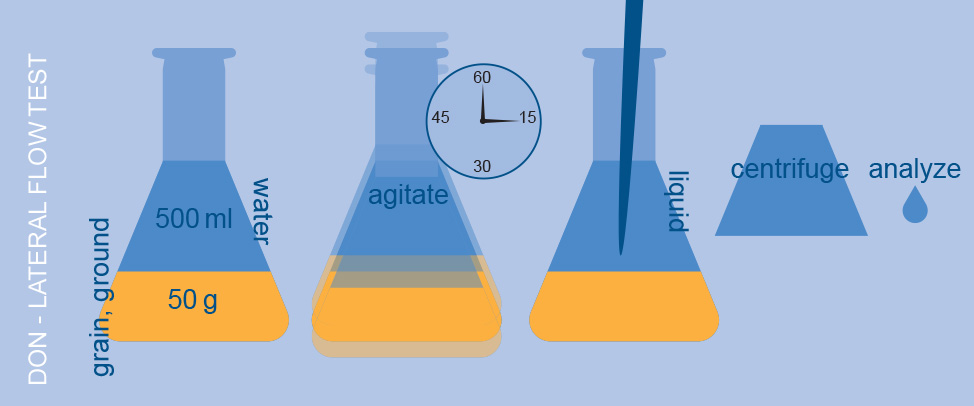
News
Business & Policy
Canadian Grain Commission proposes including falling number and DON in grain grading
March 11, 2019 By Top Crop Manager
 A Lateral Flow Test is a simple, fast way to perform a DON test. The Canadian Commission is proposing including DON as a grain grading factor. Photo courtesy of the Canadian Grain Commission.
A Lateral Flow Test is a simple, fast way to perform a DON test. The Canadian Commission is proposing including DON as a grain grading factor. Photo courtesy of the Canadian Grain Commission. As part of its grain grading modernization initiative, the Canadian Grain Commission is inviting grain sector stakeholders to provide input on whether falling number (FN) and deoxynivalenol (DON) should become official grain grading factors.
Currently, falling number and DON are not official grading factors in the statutory Canadian grading system for any type of crop. However, they increasingly play a critical role in grain contracts and the assessment and price that grain sector participants, including producers, receive for their grain. As well, advances in technology and analytical testing now provide the opportunity to test directly for these important characteristics using methods that are increasingly accessible to the sector.
The falling number value is an internationally standardized method for quantifying the extent of sprout damage in wheat. DON is a mycotoxin produced by some species of Fusarium, a fungus infecting wheat, barley, oats, corn, and ultimately limiting the end-uses of infected crops.
In a published statement, the Canadian Grain Commission requested feedback from stakeholders on whether they support the use of falling number and DON as grading factors within the Canadian grain grading system and what the impacts would be if these changes were implemented.
A full discussion document is available on the Canadian Grain Commission’s website. The document details background information on sprout damager and falling number, fusarium damage and DON, as well as knowledge about the process in other exporting countries. The document provides a potential approach for adding FN and DON into the grading system.
Interested stakeholders are invited to provide their input in between March 11, 2019 and May 10, 2019.